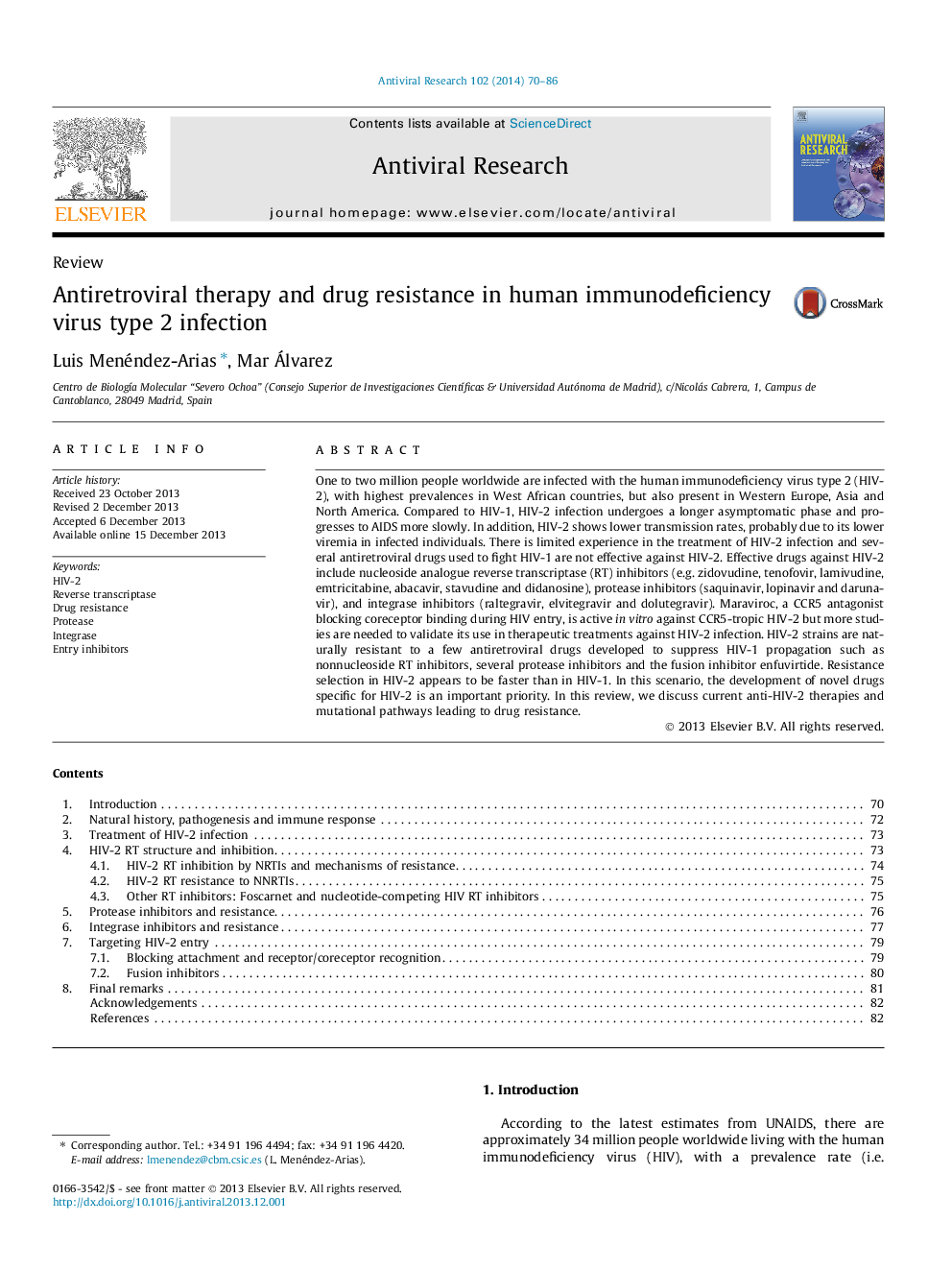| کد مقاله | کد نشریه | سال انتشار | مقاله انگلیسی | نسخه تمام متن |
|---|---|---|---|---|
| 2509934 | 1557841 | 2014 | 17 صفحه PDF | دانلود رایگان |
• This paper provides an overview of current HIV-2 therapies and the development of resistance.
• Current therapies are based on combinations of RT inhibitors and protease inhibitors.
• Several antiretroviral drugs used to fight HIV-1 are ineffective against HIV-2.
• Other approved drugs active against HIV-2 are integrase inhibitors.
• HIV-2 resistance is selected faster than HIV-1 resistance.
One to two million people worldwide are infected with the human immunodeficiency virus type 2 (HIV-2), with highest prevalences in West African countries, but also present in Western Europe, Asia and North America. Compared to HIV-1, HIV-2 infection undergoes a longer asymptomatic phase and progresses to AIDS more slowly. In addition, HIV-2 shows lower transmission rates, probably due to its lower viremia in infected individuals. There is limited experience in the treatment of HIV-2 infection and several antiretroviral drugs used to fight HIV-1 are not effective against HIV-2. Effective drugs against HIV-2 include nucleoside analogue reverse transcriptase (RT) inhibitors (e.g. zidovudine, tenofovir, lamivudine, emtricitabine, abacavir, stavudine and didanosine), protease inhibitors (saquinavir, lopinavir and darunavir), and integrase inhibitors (raltegravir, elvitegravir and dolutegravir). Maraviroc, a CCR5 antagonist blocking coreceptor binding during HIV entry, is active in vitro against CCR5-tropic HIV-2 but more studies are needed to validate its use in therapeutic treatments against HIV-2 infection. HIV-2 strains are naturally resistant to a few antiretroviral drugs developed to suppress HIV-1 propagation such as nonnucleoside RT inhibitors, several protease inhibitors and the fusion inhibitor enfuvirtide. Resistance selection in HIV-2 appears to be faster than in HIV-1. In this scenario, the development of novel drugs specific for HIV-2 is an important priority. In this review, we discuss current anti-HIV-2 therapies and mutational pathways leading to drug resistance.
Journal: Antiviral Research - Volume 102, February 2014, Pages 70–86
